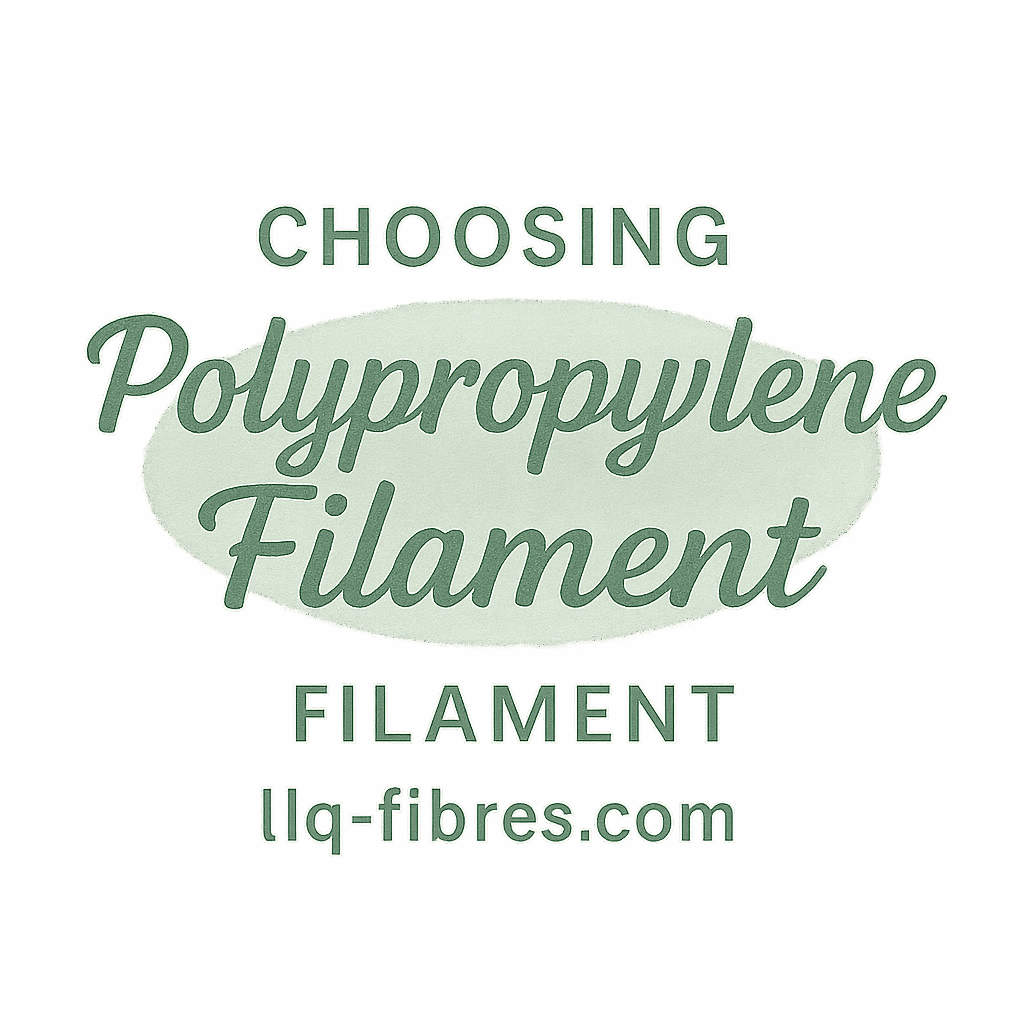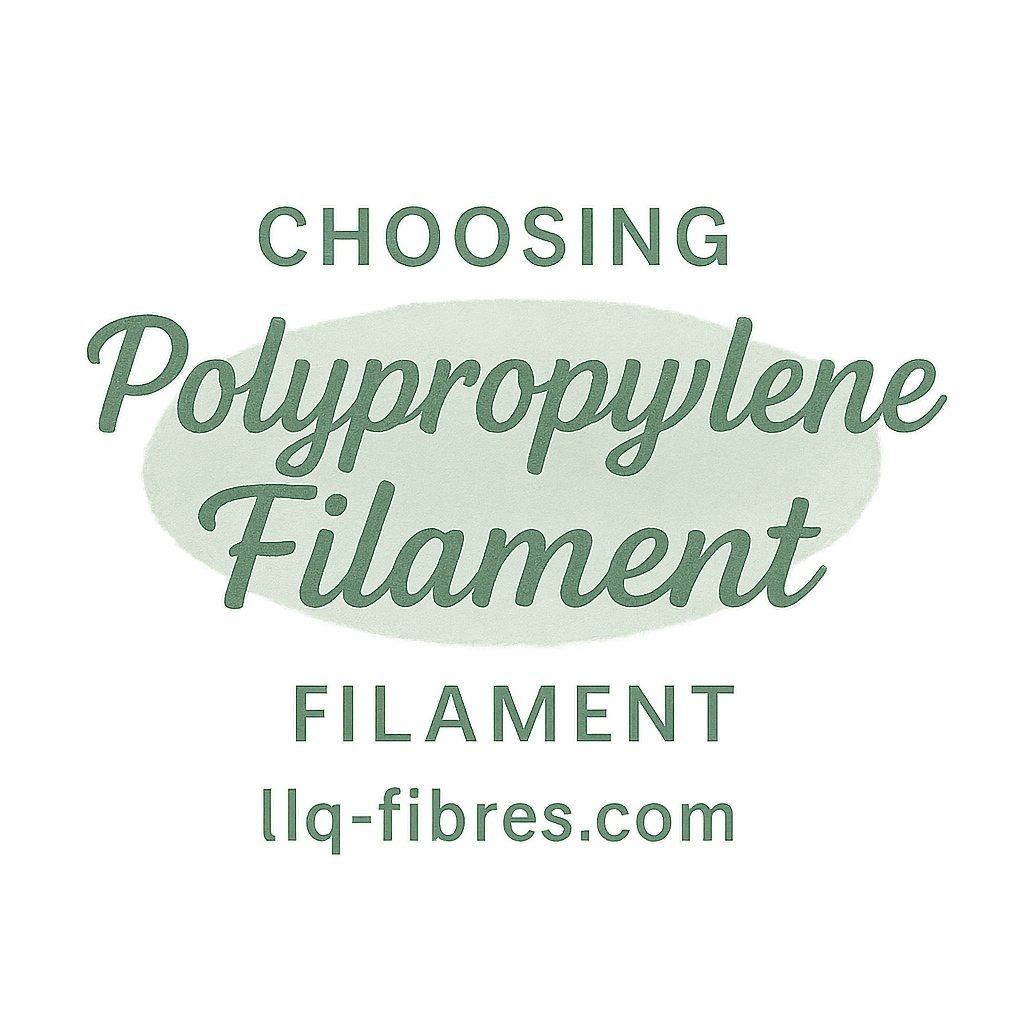Introduction
Selecting the right material for rope manufacturing is vital for durability, cost-efficiency, and overall performance. Polypropylene filament has quickly become one of the go-to materials for rope manufacturers due to its unique properties. In this article, we’ll cover 8 essential facts about polypropylene filament that every rope manufacturer should know, highlighting its advantages and how it can boost production efficiency.
What is Polypropylene Filament?
Polypropylene is a thermoplastic polymer commonly used in various industries for its strength, durability, and cost-effectiveness. When used in rope manufacturing, polypropylene filament refers to continuous strands of the polymer that are often twisted or braided to create high-performance ropes.
Unlike natural fibers, polypropylene filament is lightweight, water-resistant, and chemically stable, making it an excellent choice for a wide range of rope applications. Learn more about the basics of polypropylene here.

1. Polypropylene is Highly Durable
Polypropylene filament stands out because of its high durability. It doesn’t absorb moisture, which means it resists rotting and degradation in humid and wet environments. This characteristic is especially useful in marine and agricultural settings, where ropes face harsh conditions regularly.
Resistance to Wear and Tear
Polypropylene’s resistance to wear and tear is one of its strongest selling points. Whether it’s being used for heavy-duty industrial tasks or agricultural applications, polypropylene ropes maintain their strength over time, even with repetitive friction and use.
For industries needing long-lasting durability, polypropylene ropes are a top choice. Discover more about how these durable ropes perform in various industries in our guide to durable ropes here.
Best Applications for Durability
Polypropylene ropes are frequently used in industries like agriculture, construction, and marine applications due to their resistance to moisture and UV damage. Learn more about agricultural rope applications here.
2. Lightweight Yet Strong
Polypropylene filament is incredibly lightweight, making it easier to handle, store, and transport compared to heavier rope materials. Despite its lightness, polypropylene boasts a high strength-to-weight ratio, allowing it to carry heavy loads without stretching or breaking.
The Science Behind Its Strength-to-Weight Ratio
The polymer chains in polypropylene filament are tightly packed, contributing to its strength while still allowing the material to remain light. The result is a versatile material that balances strength and portability. To understand more about the materials used in rope making, check out our rope-making materials section here.
Practical Use in Agriculture and Marine Ropes
Due to its lightweight properties, polypropylene ropes are commonly used in agricultural and marine applications. Whether it’s for securing livestock or boats, polypropylene ropes make the job much easier. For more on ropes for agriculture, read our detailed post here.
3. Resistance to Moisture and Chemicals
Another standout feature of polypropylene filament is its natural resistance to moisture, water, and chemicals. This makes it an ideal material for ropes used in humid environments, such as marine and agricultural settings.
Why It’s Perfect for Marine and Agricultural Ropes
Polypropylene is resistant to water and salt, ensuring that ropes won’t rot or degrade like natural fibers. This is a significant advantage in marine applications where ropes are frequently exposed to saltwater. Learn more about marine rope applications here.
How Polypropylene Keeps Ropes Efficient
Thanks to its chemical resistance, polypropylene filament helps ropes maintain their integrity longer. This durability leads to reduced maintenance and fewer replacements, benefiting both rope manufacturers and their customers.
4. UV Stability and Color Retention
Polypropylene filament has excellent UV stability, meaning it resists the harmful effects of sunlight. UV degradation is a common problem for ropes used outdoors, but polypropylene maintains its strength and appearance even when exposed to the sun for prolonged periods.
How UV Stability Enhances Longevity
Polypropylene’s ability to resist UV radiation keeps the ropes from breaking down or losing strength, ensuring they perform longer under harsh conditions. For outdoor ropes and their UV resistance, see more on our industry insights page here.
Application in Outdoor and Construction Ropes
Thanks to its UV resistance, polypropylene ropes are used in construction, landscaping, and various outdoor applications. These ropes can withstand prolonged sun exposure without degrading. For more on ropes for construction, explore our blog here.
5. Versatility in Rope Types and Sizes
Polypropylene filament can be manufactured into a wide range of rope types, from lightweight threads to heavy-duty, industrial-grade ropes. This versatility allows manufacturers to meet a wide variety of needs across industries.
From Thin Threads to Heavy-Duty Ropes
Whether you need thin, flexible ropes or thick, durable ones, polypropylene filament offers the flexibility to create ropes in different sizes and strengths. For rope buying tips, explore our complete guide here.
How Customization Enhances Polypropylene Rope Manufacturing
With polypropylene, you can customize ropes for specific applications. This means rope manufacturers can design products that suit various industrial needs. Learn more about rope customization in our detailed guide here.
6. Eco-Friendliness of Polypropylene Filament
Polypropylene is recyclable, making it a more eco-friendly option compared to other synthetic materials. As sustainability becomes increasingly important in manufacturing, polypropylene offers a greener alternative.
Polypropylene as a Green Alternative
Not only is polypropylene recyclable, but it also generates less waste during manufacturing. This makes it an excellent choice for manufacturers looking to reduce their environmental impact. To dive deeper into sustainable practices in rope manufacturing, visit our DIY techniques section here.
How Manufacturers Can Benefit from Eco-Friendly Practices
By choosing polypropylene filament, manufacturers can appeal to environmentally conscious consumers and improve their overall sustainability practices. Learn more about the eco-friendly ropes industry here.
7. Cost-Effectiveness for Rope Makers
One of the most significant advantages of polypropylene filament is its cost-effectiveness. Polypropylene is relatively inexpensive compared to other materials, and it also helps reduce production costs due to its lightweight nature and ease of manufacturing.
Lower Material Costs and Manufacturing Efficiency
Polypropylene’s low price point, combined with its easy-to-manufacture properties, means manufacturers can lower production costs while still delivering high-quality ropes. To compare the cost-effectiveness of different rope materials, check out our rope suppliers page here.
Comparing Polypropylene with Other Rope Materials
In comparison to more expensive materials like nylon or natural fibers, polypropylene offers similar strength at a much lower cost, making it a valuable material for rope manufacturers. Read more about the rope buying mistakes to avoid in our post here.
8. Easy Maintenance and Repair
Polypropylene ropes require less maintenance than other materials, making them a practical choice for industries that rely on durable, low-maintenance products. Unlike natural fibers that can rot or fray, polypropylene remains strong and resilient even after extended use.
How Polypropylene Reduces Maintenance Costs
Ropes made from polypropylene need fewer repairs, which lowers the overall maintenance costs for industries. This makes it a favorite among industrial users who rely on ropes for heavy-duty applications.
Best Practices for Rope Maintenance
While polypropylene ropes are low-maintenance, proper care can extend their life even further. Explore our rope maintenance tips here to learn how to get the most out of your polypropylene ropes.
Conclusion
Polypropylene filament is a game-changer for rope manufacturers. From its durability and resistance to moisture to its UV stability and eco-friendliness, polypropylene offers significant advantages over other materials. Whether you’re in the agricultural, marine, or industrial sector, using polypropylene filament can boost the quality and performance of your ropes while reducing costs and environmental impact.
FAQs
- What makes polypropylene filament ideal for rope manufacturing?
- How long do polypropylene ropes last in marine environments?
- Can polypropylene ropes be used for heavy-duty industrial applications?
- Is polypropylene environmentally friendly?
- What are the benefits of UV resistance in polypropylene ropes?
- How do I maintain polypropylene ropes to ensure longevity?
- What industries benefit most from polypropylene ropes?

